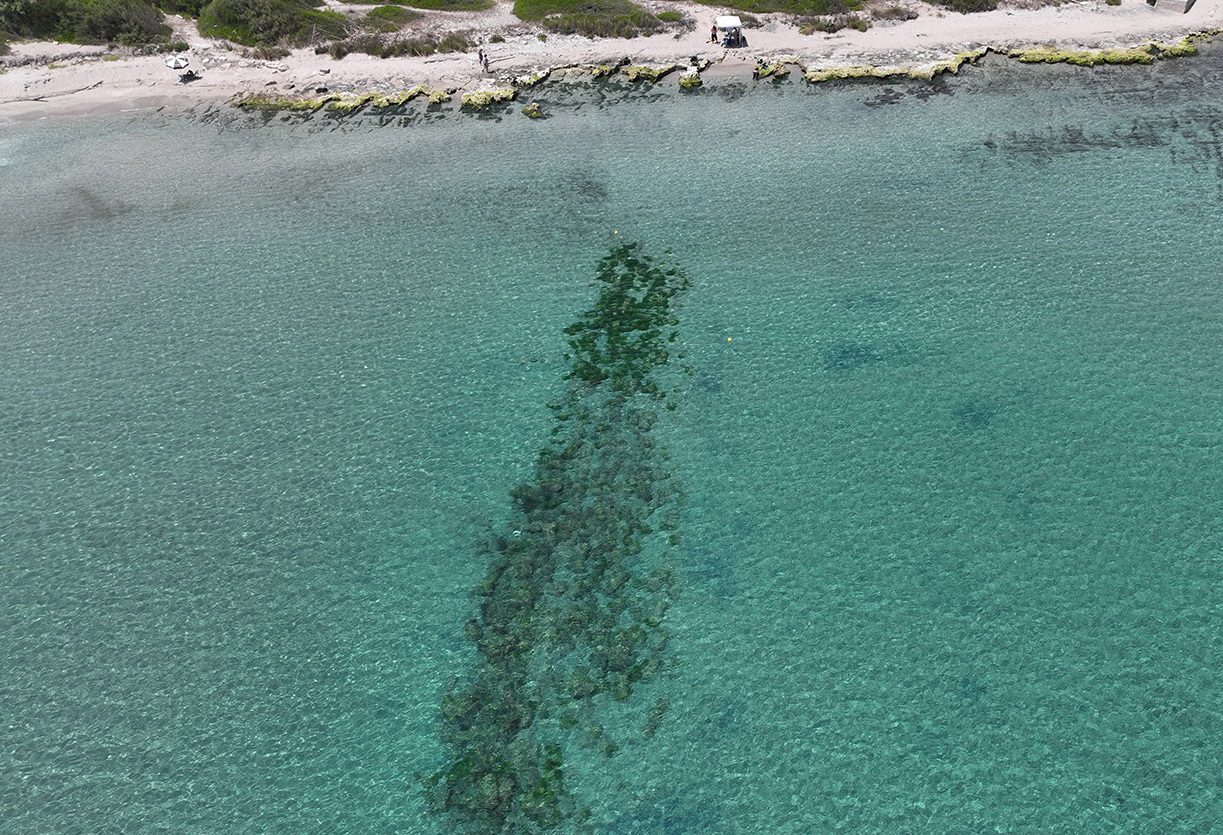A new research project led by the University of Salento is conducting an underwater and surface study of the Le Cesine coastline to explore submerged structures first identified in 2020.
Le Cesine is a 6 km nature reserve located in Italy between San Cataldo and San Foca. Previous studies using drones, ROVs, and a photogrammetric survey, revealed evidence of a submerged port and structures in the locality of Posto San Giovanni.
Archaeologists discovered the foundation of a pier measuring approximately 90 metres in length, situated 15 metres from the shoreline that followed an ancient bank at a depth of 3.5 metres.
The pier was built with large juxtaposed blocks, and possible bollards made from parallelepiped blocks with a cylinder-shaped side placed at rather regular intervals, but has since collapsed due to the disruptive force of wave motion.

According to the researchers: “This structure is similar to the submerged part of the large Hadrianic pier north of the wide bay of San Cataldo, to which it is also similar due to its impressive development and building technique, but it could also be older than that.”
On the same alignment further away from the shore are another cluster of blocks arranged in parallel and perpendicular lines.
The current project is conducting a detailed study to determine whether the two structures are associated, and further study a so-called “submerged church” which may actually be the remains of a lighthouse tower.
On the shoreline are also structures that the researchers are documenting, including a series of rock-cut storage pits, and further evidence of a building that preliminary dating suggests may be from the Roman Republican era.
In a press release published by the University of Salento: “The set of evidence at sea and on land, with the holistic approach of landscape archaeology, suggests precisely the existence of an important port complex.”

Header Image Credit : University of Salento





